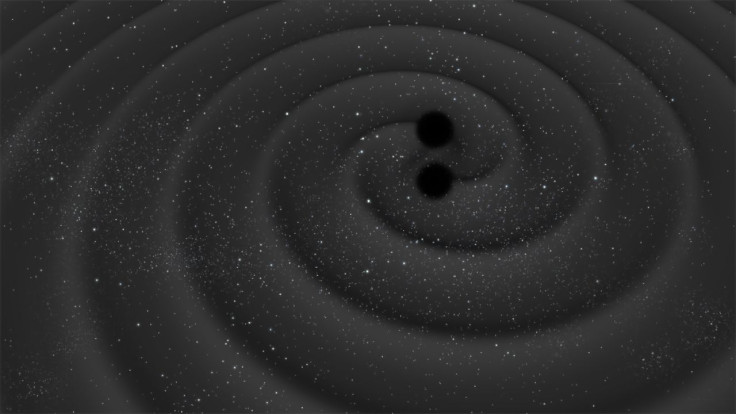4th Gravitational Wave Detection Confirms Einstein's Theory Of Relativity Prediction

A team of scientists at the Laser Interferometer Gravitational-wave Observatory (LIGO) announced Wednesday they successfully detected another gravitational wave — the fourth so far — after two black holes collided in space.
GW170814, named after the day it was detected, is a black hole collision that happened 2 billion years ago. The space-time ripples caused by the collision were also picked up by the Virgo detector in Pisa, Italy. The discovery by both LIGO and its European cousin — announced at the meeting of G7 science ministers in Turin, Italy — adds a new layer of information about gravitational waves.
The collision happened at a distance of over 1.8 billion light-years from the Milky Way. The two black holes involved were estimated to be roughly 31 and 25 times the mass of our sun. The spinning black hole that was created as a result is about 53 times the sun's mass. The shockwaves of the collision reached the LIGO observatory in Livingston, Louisiana, first. Eight milliseconds later, they lit up instruments at the LIGO observatory in Hanford, Washington. It reached Virgo 6 milliseconds later.
This marks the fourth confirmed detection of two black holes merging.
The full line up of #gravitationalwaves waveforms for the confirmed and candidates detections announced so far, including #GW170814 pic.twitter.com/RHVF6AUNCR
— LIGO (@LIGO) September 27, 2017
"It is tantalizing to see this new story of how black holes formed and evolved through history of the cosmos," Sheila Rowan of Glasgow University told BBC News. The available information on the subject was growing but the complete picture was not yet clear, she added.
Observations made by LIGO in September 2015 proved Einstein’s century-old prediction about the interaction of gravitational waves and space. The multiple sets of data obtained — this time from the same wave — have helped scientists further detect the shape of the path the waves travel along by studying the polarization of gravitational waves. This was a second major prediction made in the theory of relativity and the different angle of alignment of the waves, in respect to Virgo, allowed for a unique view-point, leading to the confirmation.
Virgo started operations on a scale parallel to LIGO on Aug. 1. It follows the model set by LIGO and the data it collects will prove crucial in zeroing in on the location, which is somewhere in the region centred around the Eridanus constellation.
Check out our cool #GW170814 infographic! What's your favorite fact?...https://t.co/UlaUDX9Kv3 pic.twitter.com/exp7rFE7s8
— LIGO (@LIGO) September 27, 2017
The signal detected, though faint, was enough to ascertain because of the three points of detection. The team was able to detect the gravitational wave, and this will help focus efforts on the right region of space, leading to more constructive data.
These ripples are detected with lasers which are passed through miles-long tunnels. The laser beam undergoes interference when there are changes in the fabric of space-time of almost up to the width of a proton, according to a report by GeekWire.
"This is just the beginning of observations with the network enabled by Virgo and LIGO working together. With the next observing run planned for late 2018, we can expect such detections weekly or even more often,” David Shoemaker, a physicist at the Massachusetts Institute of Technology and spokesperson for the LIGO collaboration said in a Guardian report.
The three detectors will together enable the team to be more precise about the origin of these waves. Studying these waves and understanding the interaction they have with different objects could prove to be an excellent tool to locate objects in the universe, the team said at a news conference on the sidelines of the ministerial meeting.
The location of the gravitational wave discovered in August was pinpointed to a location 10 times more precise than the three previous recordings. The team said the fourth wave helped them prove an aspect of Einstein’s theory of relativity which was not possible before.
© Copyright IBTimes 2024. All rights reserved.











